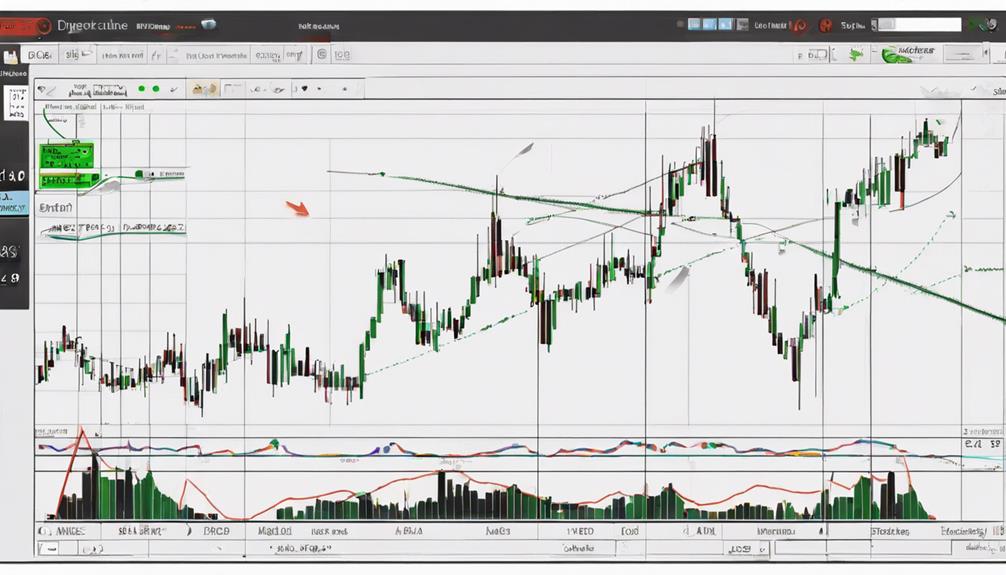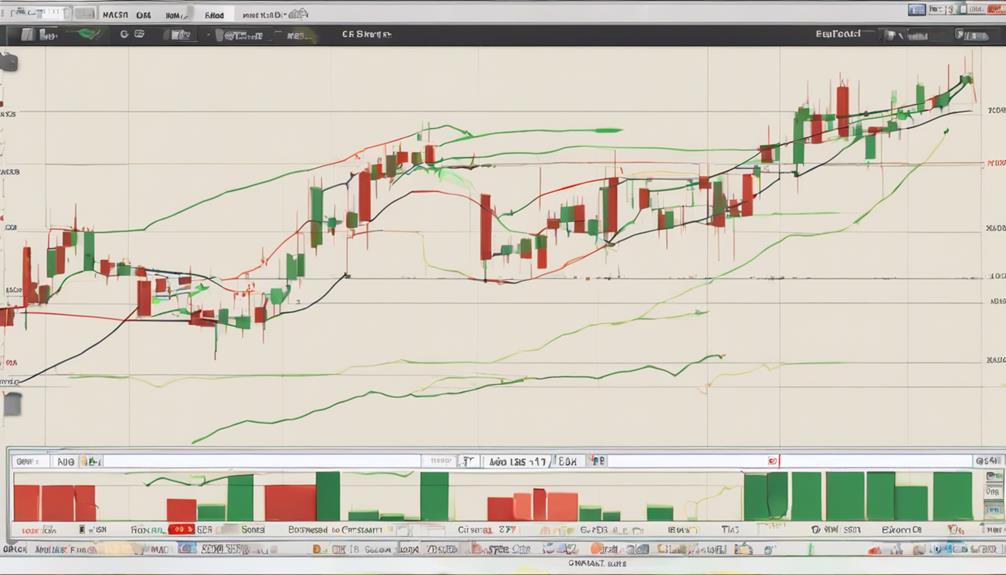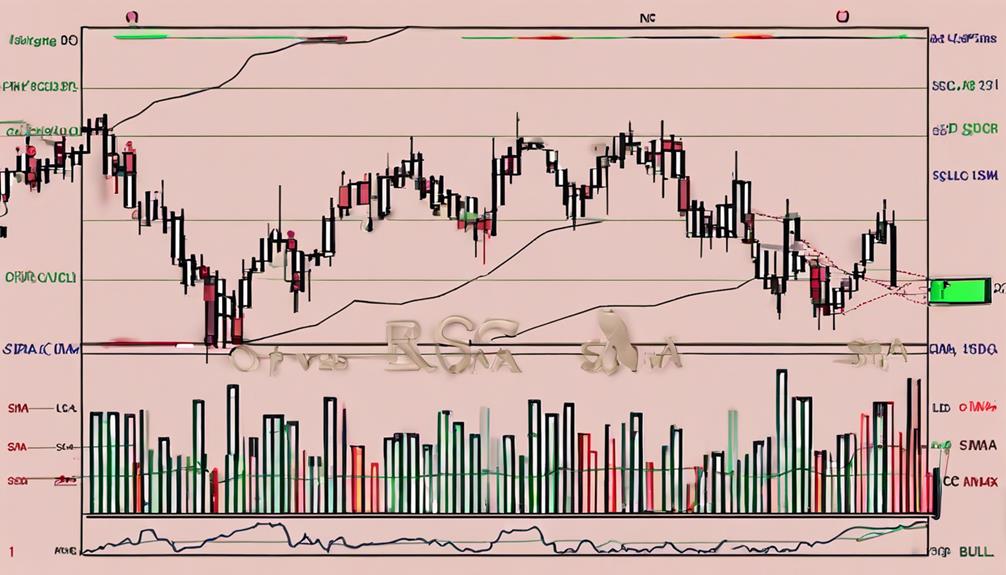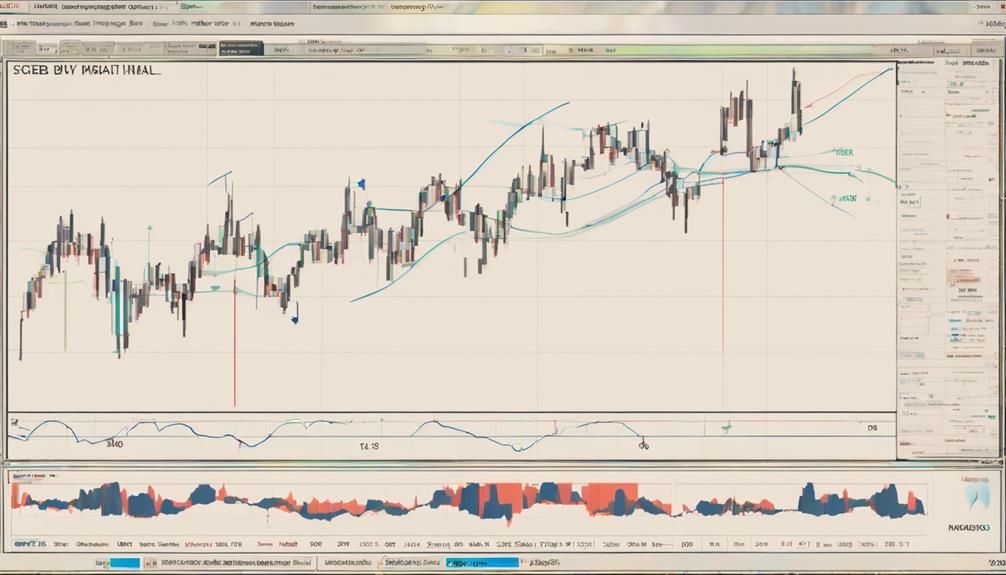When navigating the labyrinth of trading strategies, mastering the MACD indicator can serve as your guiding compass in the volatile world of financial markets.
Unravel the secrets of MACD's intricacies and unlock the potential for successful trading by honing your skills in interpreting signals and optimizing your decision-making process.
As you delve deeper into the realm of MACD strategies, a wealth of possibilities awaits those who are willing to explore its nuanced applications and harness its power to navigate the complexities of trading.
Optimal MACD Settings for Trading
When selecting optimal MACD settings for trading, consider using a combination of fast and slow lengths along with a signal line to enhance signal accuracy and adapt to varying market conditions. The standard configuration typically involves fast and slow lengths of 12 and 26, respectively, with a signal line length of 9.
However, traders can customize these parameters, such as using 5, 35, 5 or 8, 17, 9, to align with their trading strategies and preferences. Customizing MACD settings allows for fine-tuning the indicator to capture different market trends effectively.
Your choice of MACD settings should align with your trading style, timeframe, and risk tolerance to optimize performance. Experimenting with various settings can help you find the optimal configuration for your trading endeavors.
MACD Divergence Strategy Explained

To effectively implement the MACD Divergence strategy, traders analyze discrepancies between price action and the MACD indicator to anticipate potential trend reversals. This strategy focuses on identifying divergence between the price trend and the MACD indicator, which consists of two moving averages.
Bullish divergence occurs when the price forms a lower low while the MACD indicator forms a higher low, signaling a potential bullish reversal. Conversely, bearish divergence happens when the price forms a higher high while the MACD indicator forms a lower high, indicating a potential bearish reversal.
Intraday Trading With MACD Indicator

Intraday traders seeking to optimize their strategies often incorporate the MACD indicator with specific settings like 24,52,9 for enhanced precision and effectiveness.
- MACD Crossover Strategy: Utilize the crossover of the MACD line and Signal line for trade signals.
- MACD Divergence Strategy: Identify divergences between the MACD line and price movement for potential trend reversals.
- MACD Histogram: Monitor the histogram to gauge the momentum of price movements.
Combining MACD With RSI and SMA

To enhance your trading analysis further, consider combining the MACD indicator with RSI and SMA for a comprehensive approach to market trend assessment and decision-making. Integrating RSI helps in identifying overbought and oversold conditions, complementing MACD's trend-following abilities.
By incorporating SMA with MACD, you gain trend prediction and confirmation, aiding in making strategic trade decisions. This combined approach offers a holistic view of market trends, allowing you to validate signals and trends across various timeframes effectively.
Using MACD, RSI, and SMA together enhances the strength of trend analysis and improves the identification of potential reversals in the market, providing you with a more robust foundation for making informed trading decisions.
Advanced MACD Trading Strategies

Implementing advanced MACD trading strategies requires a deep understanding of market dynamics and precise execution to capitalize on potential opportunities effectively. When delving into advanced MACD trading strategies, consider the following:
- Utilize different MACD settings to act as both a signal and momentum indicator.
- Look for bullish crossovers as potential buy signals and bearish crossovers as sell signals.
- Pay attention to price movement and the convergence or divergence of the MACD indicator to anticipate potential trend shifts accurately.
Can I Use MACD Indicator Strategies for Successful Trading?
Yes, you can utilize effective MACD indicator strategies for successful trading. By studying and understanding MACD signals, crossovers, and divergence, traders can enhance their decision-making process and improve their trading outcomes. Using these strategies can help individuals identify potential entry and exit points in the market.
Frequently Asked Questions
What Is the Best MACD Indicator Trading Strategy?
For the best MACD indicator trading strategy, focus on crossovers of the MACD and signal lines for buy/sell signals. Incorporate MACD histogram reversals to assess market strength. Zero crosses give reliable trend predictions.
How Can I Improve My MACD Strategy?
To improve your MACD strategy, adjust settings for market conditions, combine with RSI and SMA, use histogram bars for momentum shifts, experiment with configurations, and apply across various markets like stocks, forex, cryptocurrencies, and commodities.
Do Professional Traders Use Macd?
Professional traders use MACD as a key tool for trend identification, momentum assessment, and entry/exit points in trading. It is widely favored for its ability to analyze various markets effectively and make informed decisions.
What Is the Best Timeframe for MACD Strategy?
For the best timeframe with MACD, consider your trading style. Short-term traders favor lower timeframes like 5 or 15 minutes, while swing traders opt for 1 or 4 hours. Long-term investors may choose daily or weekly for trend changes.
Conclusion
In conclusion, mastering MACD indicator strategies can significantly enhance your trading success.
Have you considered how adjusting MACD settings, identifying divergences, and combining it with other indicators can improve your decision-making process?
By implementing these advanced strategies, you can navigate the market with precision and confidence.
Stay ahead of the curve by mastering MACD for successful trading outcomes.


